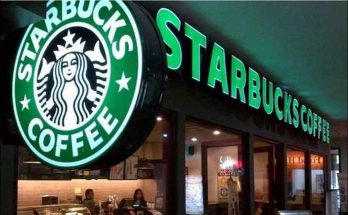Inflation in the United States. Markets loved the October inflation report, with the S&P 500 surging on news of price changes that were a little softer than economists forecasted. There’s good news in the report for everyday consumers, too. Annualized inflation dropped from 3.7% in September to 3.2% in October. And a growing list of things are actually getting cheaper, with year-over-year price declines, or deflation.
Since inflation surged in 2021, Yahoo Finance has tracked monthly price changes in 28 categories that account for most things people spend their money on. In October, 11 of those categories got cheaper compared with a year earlier. That’s the largest number of categories deflating since we started tracking prices two years ago.
Airfares fell by the most, with a 13.2% drop year over year. Rental cars dropped by 9.6%. Both moves are signs the post-COVID travel boom that pushed up prices is winding down. Used cars are falling in price, after a crazy inflation surged caused by a shortage of computer chips for new vehicles. Used car prices dropped by 7.1% in October, the 12th consecutive annualized decline.
Other categories were down modestly in October: appliances (-2%), electronics (-1%), furniture (-2.9%), gasoline (-5.3%), household energy (-3.2%), medical care (-0.8%), school supplies (-3.2%), and toys (-3.7%).
Most staples aren’t getting cheaper, alas, which is why consumers still consider inflation to be a pernicious problem. Food inflation is now a modest 2.1%, but that’s on top of price hikes that crested 13% on a year-over-year basis during the last two years. So while the current level of price hikes might be tolerable, that’s on top of prior hikes that far outstripped wage growth.
Rent is the other budget-killer. Rents are still rising by 7.2% per year, after peaking at an 8.8% annualized rate this past spring. Housing is the biggest expense for most people, and renters have been the unfortunate victims of rising demand for rental properties amid stagnant supply.
Gasoline only represents about 3% of household spending, but it has an outsized effect on consumer attitudes. Gas prices have been retreating, from a high of $5 per gallon in June of 2022 to a manageable $3.35 now. The unsettling war between Israel and Hamas has not disrupted Middle East oil supplies, as some feared, and global oil prices have been softening on growing US supplies and weakness in China, the world’s biggest oil importer.
President Biden is in a race against time as he waits for inflation to recede to the point that it starts to lift depressed consumer spirits. Confidence levels, by some measures, are recessionary, even though the job market is strong and economic output boomed in the latest quarter. Consumer attitudes grew sour as inflation worsened in 2021 and 2022, and Biden’s approval rating sank along with them.
Inflation has slowed sharply since it peaked in 2022 at 9%, but Biden’s approval rating has been stuck at a weak 40% or so. Consumers still feel the sting of cumulative price hikes, and a slowing rate of inflation doesn’t undo the prices that have already gone up. Price drops are more likely to cheer consumers, but they need to spread to food and housing, which is where a big chunk of the money goes.
Views: 1076





